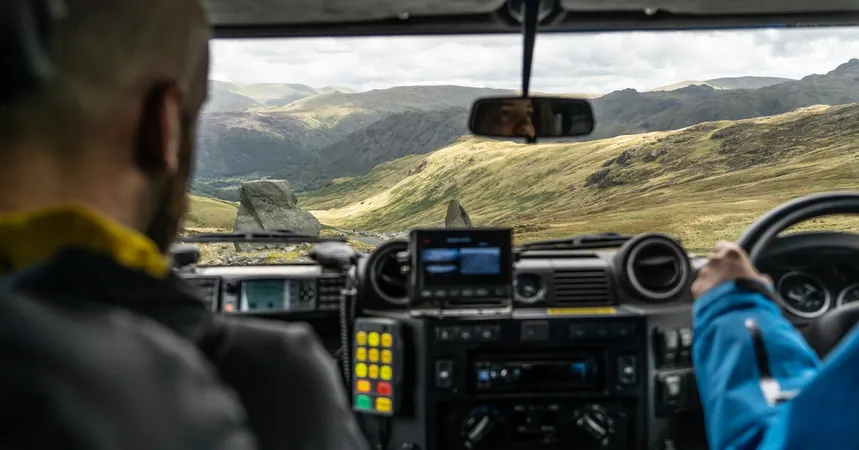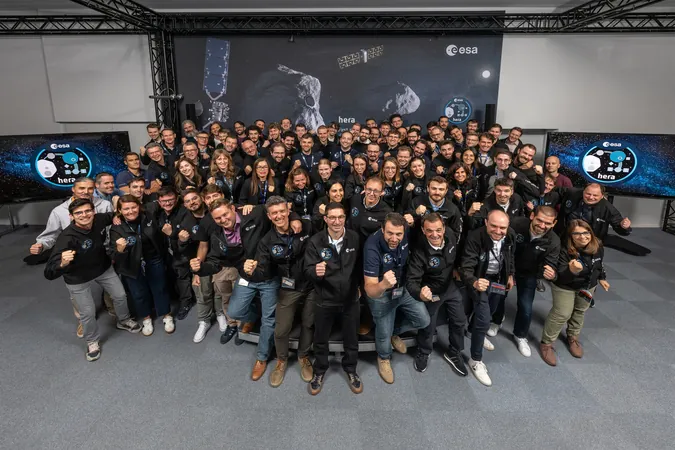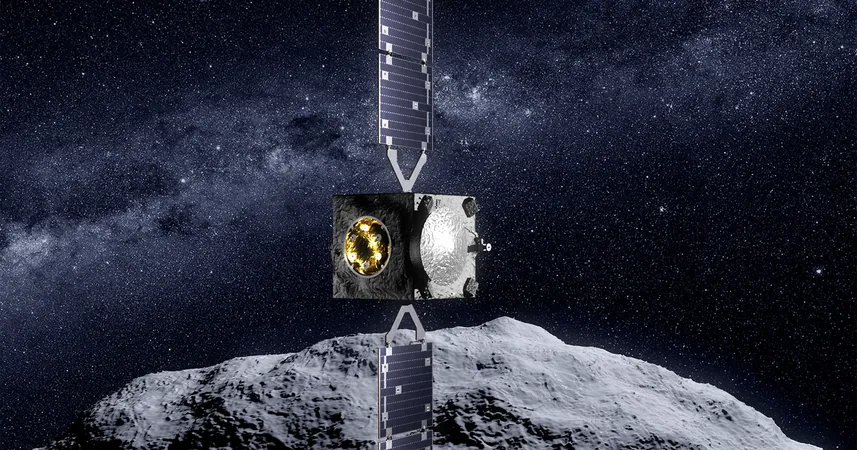
Revolutionary AI Drone Software Transforms Search and Rescue Operations, Finding Lost Hikers and Giving Families Closure
2024-10-07
Author: Emily
Introduction
On September 6, 2023, a routine hiking trip took a devastating turn when Charlie Kelly, a 56-year-old forensic psychologist and passionate hillwalker, sent a message to his partner, Emer Kennedy, informing her he wouldn't be coming home that night. Kelly had embarked on a mission to conquer Creise, a majestic 1,100-meter peak in Scotland, with plans to celebrate his last Munro climb before winter. While the weather seemed favorable, he ultimately became lost in the rugged terrain.
Emer's Agonizing Wait
Emer sat at home, anxiously waiting for his return. Initially worried, she reassured herself of Kelly’s experience and resourcefulness, knowing he had packed sufficient provisions. He kept her updated until his last communication at around 8 PM, when he claimed he could see the lights of the Glencoe Ski Center and expected to arrive shortly. Tragically, that would be the last time they would hear from him.
The Search Operation
In the ensuing days, Glencoe Mountain Rescue initiated a massive search operation involving multiple agencies, including the Coastguard and Police Scotland, along with dozens of skilled volunteers. Despite their Herculean efforts, the team found only Kelly's backpack and no sign of him.
The AI Drone Initiative
Weeks turned into months, and just when optimism began to dwindle, two members of the Lake District Mountain Rescue team—Dan Roach and David Binks—were inspired to put their new artificial intelligence drone software to the test. This groundbreaking technology was designed to enhance the search for lost individuals by using drones to analyze aerial images effectively.
Permission Granted
After reaching out to Glencoe MR, the duo was granted permission to assist in the search. Their software allowed drones to systematically cover vast areas, taking thousands of photographs with the help of programmed flight paths, which were capable of identifying specific color profiles—like those of hiking gear—against a complex backdrop of vegetation and rocks.
Finding Charlie Kelly
On October 24, in an unexpected twist of fate, the drones successfully located Charlie Kelly's body within an hour of deployment. Tragically, his remains were found in a remote gully, where he had fallen and suffered fatal injuries. Despite extensive earlier searches, the unpredictable Scottish terrain concealed his location, underscoring the limitations of conventional search methods.
A Breakthrough for SAR Operations
This incident marked a significant breakthrough for search and rescue (SAR) operations in the UK, a sector that relies heavily on volunteer teams. Often dubbed the nation's fourth emergency service, these volunteers face increasing demands, especially after the COVID pandemic spurred a surge in outdoor activities that led to more incidents. As rescue teams grapple with limited resources, advancements in technology like the MR Maps drone software become invaluable.
Future Developments
The software is not just a one-off solution; developments are underway to ensure it can be implemented across various SAR teams nationwide. As successful trials continue, the algorithm's versatility suggests it could greatly reduce the time spent on formal searches, alleviating the pressures on volunteer resources.
Ethics Over Profits
Although the market for search and rescue drones is valued at around $4 billion, Roach and Binks have no intention of commercializing their software. Their motivations are purely driven by the pressing need to help those in distress, epitomizing the spirit of community and volunteerism inherent within the UK’s mountain rescue community.
Emer's Gratitude
As Emer Kennedy reflected on the tragic news of Charlie’s recovery, she expressed profound gratitude towards the rescue teams. The innovative use of drone technology not only provided closure for her and Kelly’s family but also highlighted significant advancements in SAR operations that could save more lives in the future. The funeral for Charlie, attended by family, friends, and colleagues alike, was a poignant reminder of the human connections that the tragedy forged, showcasing the town's unity amidst sorrow.
Conclusion
In this digital age, where technology meets humanitarian efforts, the integration of AI in rescue operations stands as a testament to innovation in life-saving methods. For families of lost individuals like Emer Kennedy, the hope remains that technology will bring their loved ones home when traditional methods fall short.









 Brasil (PT)
Brasil (PT)
 Canada (EN)
Canada (EN)
 Chile (ES)
Chile (ES)
 España (ES)
España (ES)
 France (FR)
France (FR)
 Hong Kong (EN)
Hong Kong (EN)
 Italia (IT)
Italia (IT)
 日本 (JA)
日本 (JA)
 Magyarország (HU)
Magyarország (HU)
 Norge (NO)
Norge (NO)
 Polska (PL)
Polska (PL)
 Schweiz (DE)
Schweiz (DE)
 Singapore (EN)
Singapore (EN)
 Sverige (SV)
Sverige (SV)
 Suomi (FI)
Suomi (FI)
 Türkiye (TR)
Türkiye (TR)